
There was a time when major league players were tied to their teams by the reserve clause. Players received one-year contracts and could have their salaries cut or raised based on performance. Even the biggest stars, Ted Williams, DiMaggio, Mays, Aaron, Musial, Snider, only signed for a single season. If you check their baseball reference pages, you will see that some of them, not the big stars usually, but the lesser players, fluctuate based on how they did. Duke Snider’s highest salary according to baseball reference, was 44,000 dollars in 56-57 and 58. For the next two years, 59-60, Duke earned 500 dollars less. Why? Well, in 56-57 and 58, he was coming off of consecutive 40 homer seasons. In 1959, playing with some injuries and in the cavernous LA coliseum, Duke’s HR production dropped to 15 as he played only 106 games. 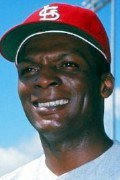
Players finally had enough, and the fight was led by Cardinal outfielder, Curt Flood. Flood, who was a member of the Cardinal 64 and 67 Championship teams. After the 1969 season, the 31-year-old Flood was traded in a huge deal to the Phillies along with Joe Hoerner, Tim McCarver and a minor leaguer, for Dick Allen, Jerry Johnson and Cookie Rojas. Flood refused to report to the Phillies. The Cardinals then replaced Flood with Willie Montanez and another minor leaguer. But, in the eyes of MLB, Flood was still Phillie property. Flood sat out the entire 1970 season. So, in November of 1970, the Phils traded Flood to the Senators for Greg Goosen, Gene Marting and Jeff Terpko. The Senators then signed Flood to a 110,000-dollar contract, half paid up front. Flood played exactly 10 games for the Senators and then left the team by mid-season. His MLB career was effectively over.
That winter, Flood filed suit against Bowie Kuhn and baseball saying the reserve clause was a collusive measure that reduced competition and thus was an anti-trust violation. He had the backing of the MLBPA and Marvin Miller. The case went all the way to the US Supreme court. The court ruled that baseball was not interstate commerce and did not violate the anti-trust exemption MLB had received in 1922. The decision has since been criticized by legal scholars for years. 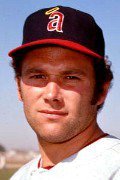
After the 1975 season, two pitchers, Andy Messersmith of the Dodgers, and Dave McNally of the Expos, had their contracts automatically renewed for the 76 season. Neither McNally or Messersmith had signed their 1975 contracts. Messersmith had just completed his third season with LA. McNally, his fist with Montreal after being traded from Baltimore. Since neither of them had signed the contracts, they both asserted that they were free to sign with other teams for 1976. The owners disagreed and asserted that according to the reserve clause, the one-year contracts were perpetually renewed. The players association filed a grievance, and on November 21 the first hearing was held before an arbitration panel composed of MLB Player Relations Committee chief negotiator, John Gaherin, Marvin Miller and Peter Seitz, the chairman and impartial arbitrator, who had been agreed upon by both parties.
On December 23rd, 1975, Seitz ruled in favor of the players. This was huge. MLB appealed the decision to the United States district court for Western Missouri. But Judge John Watkins Oliver denied the appeal. It was later denied by the Eight District Court of Appeals. Finally, in August after all the appeals were exhausted, MLB and the MLBPA reached an agreement allowing players with six years of major league service to become free agents. McNally and Messersmith were granted free agency on March 16, 1976. Messersmith signed with the Braves on April 10th and would pitch until 1979. McNally did not pitch professionally after 1975. 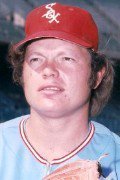
So, it began. The Dodgers would sign their first real free agent in November of 1977 when they signed reliever Terry Forster. Forster had been allowed to walk after pitching for the Pirates in 1977. Terry would stay with LA for five years. His base salary was 150,000 a year with a chance to earn bonus’s. They would sign several what would be considered complimentary players and bullpen help, but no so-called stars. They even brought back Messersmith in 1979. 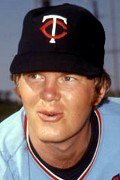 After the 79 season, they signed Twins ace, Dave Goltz. Goltz had compiled a 96-79 record with the Twins over 8 seasons. His ERA at that point was 3.48. Over the next 3 years with LA, he compiled a 9-19 record with an ERA above 4. One of those losses was game 163 when the Dodgers lost to the Astros after winning three straight games to tie for the division. He did pitch in two games against the Yankees in the 81 World Series. But overall, Goltz was a huge disappointment. Another huge bust in 80 was Don Stanhouse. He went 2-2 with a bloated 5.02 ERA.
After the 79 season, they signed Twins ace, Dave Goltz. Goltz had compiled a 96-79 record with the Twins over 8 seasons. His ERA at that point was 3.48. Over the next 3 years with LA, he compiled a 9-19 record with an ERA above 4. One of those losses was game 163 when the Dodgers lost to the Astros after winning three straight games to tie for the division. He did pitch in two games against the Yankees in the 81 World Series. But overall, Goltz was a huge disappointment. Another huge bust in 80 was Don Stanhouse. He went 2-2 with a bloated 5.02 ERA.
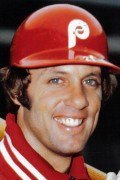 Jay Johnstone, another free agent in 1980 did provide a good bat off of the bench and was quickly the teams clown in the clubhouse. Jay remained until 1982 and was a member of the 81-championship team. He was 2-3 in the World Series, with his big hit being a PH home run. 
Jay Johnstone, another free agent in 1980 did provide a good bat off of the bench and was quickly the teams clown in the clubhouse. Jay remained until 1982 and was a member of the 81-championship team. He was 2-3 in the World Series, with his big hit being a PH home run. 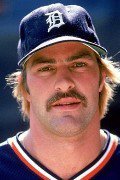
After that season, they stuck to fringe guys and complimentary players. No major free agent was signed until they signed Kirk Gibson in January of 1988. LA’s first big name free agent would play just a single full season in Los Angeles. But that one season would be huge, MVP of the league, and while playing hurt, he hit what was up until that time, the most famous homer in Dodger World Series history. His no-nonsense approach to the game stunned some in the clubhouse, he made it plain that he was there to win, and nothing else mattered.
They would sign another bona-fide superstar a few years later when they signed Mets star, Darryl Strawberry. Straw also played one full season for the Dodgers before his addiction to drugs was brought to the surface. The results of the first few forays were very mixed. But like most teams of the era, they would keep trying to find the right fits. At the end of 1989, they signed reliever Jim Gott, CF, John Shelby, OF Hubie Brooks, and reliever, Mike Maddux.
In February of 1990, they signed reliever, Don Aase. Shelby was released in June. In November of 1990, they signed Strawberry. In December they also signed, Juan Samuel, Mickey Hatcher, and Fernando. In March of 91, they signed Gary Carter and released Valenzuela. It seemed at this point in time, they would see which superstar was available and try to see if he was a fit. The rest of the free agents seemed to be roster fillers. Brett Butler was brought in for the 91 season, and was an offensive force for that team.
They would often sign guys like Cory Snyder, and Kevin Elster, who were decent players with track records of some success. The turnover in the bullpen and rotation was pretty consistent. In the early 90’s they were trying a lot of different arms. One the field, they were just beginning a string of five straight Rookies of the Year, beginning with Eric Karros. Finally in December of 1994, they signed a player who was expected to play every day, 3B, Tim Wallach. Another big signing was Japanese star, Hideo Nomo on the 8th of February in 95. He would become the ROY.
They signed Todd Zeile in December of 96, basically to replace Wallach. Zeile would hit 31 bombs for them in 97, then get shipped to Florida in the Mike Piazza trade. 97 was the last season for the ownership of the O’Malley family. Fans were visibly disappointed when Peter sold the team to Fox. The next several years would be shaky for the team and for the fans. In 98, Fox traded away, Piazza, Zeile, Nomo, Konerko, Reyes, and Bobby Bonilla. Their big signing was Kevin Brown in December of 98. Not only was ownership shaken up, but Fred Claire was fired as the GM, Lasorda made the Konerko trade, and then Kevin Malone was brought in as GM in 99. The new manager was Davey Johnson. The team finished under .500 for the year.
In the winter of 1999, they traded Mondesi to the Jays for Shawn Green. Their first free agent signing was reliever, Mike Fetters. They also signed Hershiser, Elster and FP Santangelo. Robert Daly had bought into the Fox group in 99, so he was also in on player personnel decisions. Maybe feeling their fingers singed a bit, they shied away from the big-ticket free agents. They did finish over .500 and in second place, but after the season, both Malone and Johnson were gone, replaced by Jim Tracy as manager, and former pitching coach, Dave Wallace as GM.
Wallace signed P Andy Ashby as his first free agent. But like the GMs before him, he stuck to fringe guys and roll players. He did resign a couple of his own guys, the most notable being Darren Dreifort. Dan Evans was brought in as GM for the 02 season. His first significant signing was Hideo Nomo, brought back to LA after spending four years with four different teams. He would pitch well the next two seasons for LA winning 16 games each year. He did make an interesting trade in December, trading two players to the Indians for OF Dave Roberts.
He also traded Gary Sheffield to the Braves that winter, and signed another Japanese free agent, Kazuhisa Ishii. Ishii would pitch 4 seasons in LA with a 39-34 record and a 4.44 ERA. LA finished 3rd. That winter, he traded the last remaining member of the five ROY’s in a row club, Eric Karros to the Cubs. He signed first baseman, Fred McGriff to a one-year deal. No other big-name stars were signed. McGriff would play ok for LA, he then moved on for his final season. LA finished 2nd in 03.
Frank McCourt bought the team in 2004. So, more changes to the hierarchy of the Dodgers. Paul De Podesta took over as GM in February of 04. De Podesta seemed more into trading for players than signing free agents. He traded for Jason Werth and Cody Ross before spring training was over. He also traded for Milton Bradley, whose Dodger career would be short and tumultuous. He also made two trades at the deadline that brought Penny, Choi, Finley and Mayne to LA. Finley would hit a huge grand slam to clinch the division for the Dodgers. But they lost in the first round to the Cardinals.
The 05 team would slide to fourth place, and De Podesta would be fired in October and replaced by Ned Colletti. Again, that winter, De Podesta concentrated on fringe and role players. Signing guys like Elmer Dessens, Ricky Ledee and Mike Edwards. But then in December, he signed Jeff Kent, he followed that by signing JD Drew. He then surprised most everyone by signing Derek Lowe. He dipped into the Japanese pool and signed Norihiro Nakamura, a bona-fide Japanese league slugger. Nakamura would play only 17 games for LA. Despite bringing in two of the top free agents in Drew and Kent, the team was not very good.
De Podesta was fired, and Colletti hired on the 16th of November 2005. One must remember that most of McCourt’s purchase price for the Dodgers was based on debt. To offset this, McCourt raised ticket and concessions prices every year he owned the club. Colletti started his tenure as GM by signing Olmedo Saenz. He then signed Sandy Alomar and traded Bradley to the A’s for Andre Ethier. His next three free agents were Rafael Furcal, Bill Mueller, and Nomar Garciaparra.
He signed Kenny Lofton, Brett Tomko and Aaron Sele. He dipped into the Japanese pool and plucked Takashi Saito. He also replaced Jim Tracy with Grady Little as manager. LA rebounded some and finished second. That winter he signed Juan Pierre to a five-year deal. He re-signed Nomar. He also brought in Randy Wolf and Mike Lieberthal. Then he signed Giants ace, Jason Schmidt. We all know how that worked out. The 07-team finished fourth.
Under Colletti, guys like Luis Gonzalez would spend one year with the team. Long term deals were not a big thing under McCourt. The Pierre deal was one of the few exceeding three seasons. That winter of 07, Colletti took another gamble and signed Andruw Jones to a two-year deal. It would be a disaster. Jones reported out of shape and never got going at all. He also signed Japanese hurler, Hiroki Kuroda. 08 would see yet another managerial change as Joe Torre took over for Little. Despite the busts of Schmidt and Jones, the 08 Dodgers would win the west. The reason was a mid-season trade that brought Manny Ramirez to LA. That July 31st trade brought a bona-fide slugger to LA and Ramirez would have one of the best stretches of any Dodger player ever. He then helped LA beat the Cubs in the LDS before they lost to the Phillies in the LCS.
Under the surface though, trouble was brewing for the Dodgers owner. His time was coming to a close. It would be a couple of years away, but McCourt’s marriage woes would eventually lead to his having to sell the team. Colletti though was doing the best he could under the circumstances. He re-signed Ramirez, which would turn out to be a bad decision as Manny’s PED use came out.
The one thing that was helping the Dodgers was the fact that some of the young talent drafted under Logan White before he left, were beginning to make an impact at the major league level. Guys like Matt Kemp, Clayton Kershaw, Russell Martin, James Loney and Chad Billingsly. Those guys were all in the top 12 players LA had in 09. Ramirez would play in only 104 games, but they got some serious slug from Kemp, 26 long balls and Ethier, who hit 31. They won the division again, beat St. Louis in the LCS and fell to Philadelphia once more in the LCS.
2010, Schmidt and Jones were gone, Ramirez would be traded. Colletti had his work cut out for him. Not having the resources for the big names, Ned went after as many good players as he could. Guys like Jamey Carroll would be role players in the overall scheme of things. Vincente Padilla, Jeff Weaver and Ramon Ortiz were expected to help the rotation. He also signed veteran OFs, Garrett Anderson and Brian Giles. Neither would add much to the offense. Giles retired at the end of spring training and Anderson was released in August. The team slipped to fourth place, Torre retired from managing and Don Mattingly took his place.
It was once more a busy off-season for Colletti. He would sign Uribe, Jon Garland, Rod Barajas, Gabe Kapler, Marcus Thames, Aaron Miles, Lance Cormier, all before spring training. Kapler was released in March. The team finished three games over .500 and placed third in 11. After the 11 season, Colletti was once again very busy in the winter. He brought in Juan Rivera, Mark Ellis, Matt Treanor, Luis Cruz, Adam Kennedy, Chris Capuano, Jerry Hairston, and Aaron Hurang. And all that before the end of December. Some would have an impact, some not so much. But at this point in his tenure, it was quantity over quality.
In June, Ned dipped into the international pool and signed a young outfielder out of Cuba. Yasiel Puig. The Wild Horse would make his MLB debut in 2013 and immediately fill the Dodger faithful with both delight and angst. He would be a topic of much discussion throughout his Dodger career. The 2012 team finished second in the West. But change was coming faster than anyone expected. 2011 had seen MLB take control of the team’s day to day operations, and in 2012, he was forced to sell the team. Guggenheim took over operation of the team on May first when the sale was final. After the 2012 season, the LA Dodgers would begin a completely different era in team history.
When “The Trade” was made in August of 2012, the new ownership showed they were willing to do what they had to, to change the team’s direction. Although it did not really affect their 2012 final standing, the die was cast. This group was committed to winning no matter what the price. The farm system was paying off too. Kershaw and Kemp would be big parts of the new direction. Colletti with more cash available to him, signed Korean pitcher, Hyun Jin Ryu in December. Then he plucked Zack Greinke from the free agent ranks. J.P. Howell was signed in January. The team won the west and began its string of consecutive playoff appearances which continues to this day.
Since 2013, LA has continued to sign free agents with varying degrees of success. Those signings coupled with the contributions of the farm system the first several years of Guggenheims ownership, have allowed the Dodgers a string of successful seasons unheard of in Dodger history. Pre free agency, the Dodgers best two decades had been the 50’s and the 60’s. They played in five World Series in the 50’s. They played in in three in the 60’s. They were four and four in those appearances. They have played in four in the 2000’s. They are two and two in those appearances. Will they return in 2025? They have made many additions to the 24 team. They have had a few losses too, most notably, Buehler and Flaherty. But they brought back the Hernandez boys and Kersh, and have added Snell, Sasaki, Conforto, Yates and Scott. How those free agents fare is yet to be seen.
If you look at the team’s overall record in free agency, there have been several total busts. Schmidt, Jones, Strawberry, Ramirez, Goltz, Stanhouse. Gibson had one magical season but was gone after two subpar and injury prone years in 89-90. JT and Uribe did well. Ryu and several of the pitchers they signed made contributions. JD Drews deal was one of the first the team signed with opt outs, which JD took after his second season so he could sign with Boston.
Ohtani’s one season so far is the best ever by a Dodger free agent. How the rest of his free agency goes will say a lot as to the Dodgers chances of repeat titles. It is mostly about piching now. The free agent pitchers this team has signed will go a long way towards the success of the franchise.
Born June 14th, 1948, in Los Angeles California. AKA The Bear
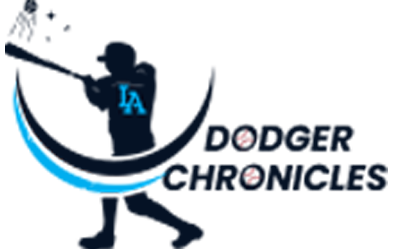
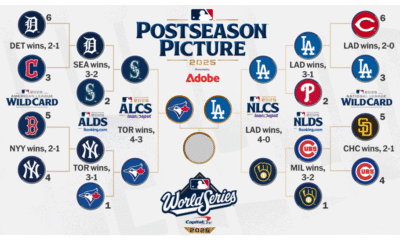

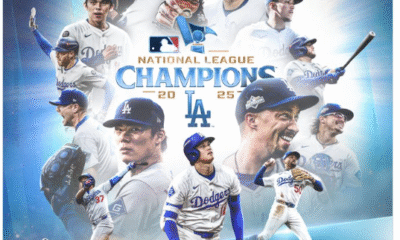

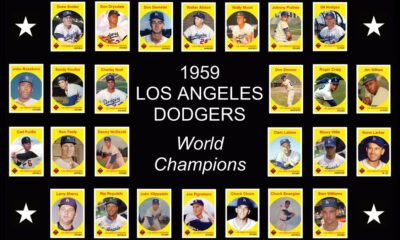

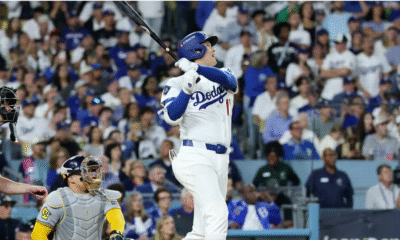





Good article Bear
Thanks John, took a while, but I got it done.
Well written Bear. Thank you.
Thank you Badger.
O
FanGraphs is the last of the “major” baseball sites to publish their top 102 prospect chart:
Sasaki and Rushing firmly in the top 10.
Freeland at 35.
DePaula, Henriquez and River Ryan fill out the Dodgers share.
From the chat with Longenhagen:
Nick: I’m surprised that Zyhir Hope isn’t in the top 100, can you provide some insight as to why? Fall league performance doesn’t move the needle much?
Eric A Longenhagen: AFL performance definitely moved the needle for me, he’s a talented guy who I’ve got just outside the Top 100. Lemme just paste his report in here. It’ll be pushed live to the board along with other relevant near-misses and picks to click this week…
Hope was traded to the Dodgers as part of the Michael Busch deal before 2024 spring training, just six months after he was selected as the Cubs’ 2023 11th-round pick. He then missed most of the first half of the 2024 season with a shoulder injury and was limited to just 61 regular season games before he picked up reps in the Arizona Fall League. He slashed .287/.415/.490 in 248 PA at Rancho Cucamonga and then .228/.301/.446 in 103 PA in Arizona.
Hope’s power is real. He has become tremendously strong since turning pro, he generates ridiculous power for a hitter his age, and he does so in a short mechanical distance. His peak exit velocities are comfortably plus on the big league scale; during Fall League, I watched him hit a 470-foot homer one day and then fight off a 97 mph fastball for an oppo homer the next. Why the apprehension, then? For one, Hope is now physically maxed out. His thighs look like tree trunks and he’s slowed down a good bit already compared to high school. His swing is relatively grooved… In short, I think there’s more strikeout risk here than currently shows in his data, which I don’t trust because of the relatively small sample, the Cal League environment, etc.
Envious: It’s pretty wild that the Dodgers have the best team, and also no one has more top 100 guys than them too.
Eric A Longenhagen: The Alex Freeland development is absolute nuts, can’t say I’ve seen anything like that before.
Do you have any Grey Papelbon?: What would need to happen for Eduardo Quintero to make it back to the Top 100?
Eric A Longenhagen: Better CF defense
Art Fuldoger: You mention a possibility of Freeland breaking camp? Super UT or and actual everyday player?
Eric A Longenhagen: Every day guy, might be the best SS defender in camp depending on how Hyeseong looks.
Rob: How close was Jackson Ferris from making the list?
Eric A Longenhagen: He’s just outside of it but was a confident exclusion. Lemme paste his report for yall:
Signed for $3 million as a second rounder in 2022, Ferris didn’t pitch at an affiliate after the draft and was handled pretty conservatively during his pro debut, as he made 18 starts but only pitched 56 strikeout- and walk-heavy innings. He was traded to Los Angeles during the offseason as part of the Michael Busch swap with the Cubs and had a more stable 2024, as Ferris worked 126.2 innings, posted a 3.20 ERA, and reached Double-A toward the end of the year (where his strikeouts and walks regressed).
Ferris has a powerful lower half, bending deep into his blocking leg. The Dodgers seem to have altered the direction of Ferris’ stride a little bit, and he now appears more closed off. Ferris will touch 96 but tends to sit 92-94. His fastball generated an average rate of chase and miss in 2024, as did his most-used secondary pitch, a slider in the 83-86 mph range. Ferris can also lob in a slow, mid-70s curveball, and at times his changeup has bat-missing action, but that pitch has come along more slowly than hoped when he was drafted and is still below average, as is his command. He lacks a plus pitch right now and, at a pot-bellied age 21, isn’t obviously projectable. He looks like a fair no. 4/5 starter.
Of course, Dodgers dev… but again, the exercise is about scouting and not predicting. It’d be weird to slide a guy just because the Dodgers traded him to a team that has struggled with dev, right?
SG: Were Emil Morales and Joendry Vargas near your top 100?
Eric A Longenhagen: Yeah, similar to the high-variance high schoolers, lots of hit tool risk with both those guys. For example, Morales had a sub-70% contact rate in the DSL.
“Eric A Longenhagen: Every day guy, might be the best SS defender in camp depending on how Hyeseong looks.”
Hyeseong at short. Yep.
The premise of this article is exactly true.
Great stroll down memory lane for me Bear. Terrific article today.
Oh, how I remember how baseball was prior to 1975. And how surprised I was after the unsuccessful Flood case, that McNally and Messersmith won their case that granted free agency. Salaries instantly changed.
If my memory serves, and I might be dead wrong on the details of this after 50 years, but I remember Pete Rose reporting before 1975 that he wanted to be the first pure singles hitter to make $100,000 per season. That was the benchmark for superstar money in those days. After free-agency, he made a million a year (I think) or something close. Salaries added a zero.
Between being an underpaid indentured servant to one team (meal money in the minors was $2.50 a day, and you paid the cubbies dues out of that) and the Vietnam lottery and draft, life was pretty complicated for a 19 year old kid trying to make it in pro baseball.
Thanks for the great article Bear.
The most Rose made as a player came in 1979 when he made 905,000 in his first season with the Phillies. The only year his salary was 1,000,000 was 1986 when he was a player-manager for the Reds. Rose was making over 100,000 in 1970. His salary in 1976 was 180,000. In 77 he was making 375,000.
Well Bear, my 50 year old personal memories were way off. And I didn’t take the time to fact-check them. They were just memories and unimportant.
My point was actually to shed some light on what those days were like, prior to 1975, for a young player.
Thanks for the corrections.
Baseball Reference still the best source of this kind of information. They used the Sporting News as a reference source.
Actually I use Baseball Reference practically every day. Just not to fact check my old recollections this go round for reasons I stated.
Understood. I just like to make sure of my facts now and then, otherwise I get grief from at least one poster.
The Red Sox announced Monday that they’ve signed outfielder Trayce Thompson to a minor league contract. The Wasserman client will join their big league camp for the remainder of spring training.
Good Luck Trayce.
Joc Pederson is taking reps at first base in Rangers camp. The big news is Mike Trout is moving to right field.
Well, good luck Joc. I can’t see that going well as he stank in 2019 and he is now much older and somewhat heavier.
Hopefully Trout can stay healthy this year.
Their biggest mistake was the deal they didn’t make. They never signed me, didn’t even get a phone call. They went into a brief tailspin after that.
Then when I got too old to play well and could have made a big difference in the front office……crickets!
On the last post, Badger posed the question:
If I read the details correctly the AAV of his contract is $46 million for 15 years. He will be paid $2 million a year until 2034. If that’s correct, the Dodgers will be paying him and the MLB tax long after he has retired. Terrific deal for the Dodgers, for a while anyway. Maybe someone with more accounting knowledge can explain how that actually works for the Dodgers starting in 2034.
It is actually $46MM for 10 years.
“Deferred compensation obligations incurred in a Contract executed on or after Sept. 30, 2002, must be fully funded by the Club, in an amount equal to the present value of the total deferred compensation obligation, on or before the second July 1 following the championship season in which the deferred compensation is earned.”
The NPV of Shohei Ohtani’s contract is $460,810,760 ($46,081,076 annually). His contract calls for LAD to pay him $2MM per year, and $44,081,076 placed into escrow at least by the 2nd July 1 following the championship season the salary was earned. The first escrow payment is to be impounded by July 1, 2026, and continued annually through 2035.
Guggenheim investments average more than 10% annual return. The escrow would not need a 10% annual return. If the escrow account earns a 5.6% annual compounded return, the escrow account will have enough to fund the $68MM annual payments through 2043.
The last of the LAD payments will be $44,081,076 into escrow July 1, 2035. Shohei will be paid from the escrow proceeds once his 10 year contract is up.
The Dodgers tax liability, as calculated with Shohei’s contract, will end once Ohtani’s annual payroll runs out in 2033. Ohtani will not be considered in the Dodgers tax calculation even though the Dodgers could still need to make deferred contract payments for two years, and Ohtani will be receiving $68MM annual payments. They will no longer count against AAV. This is why the deferred payments work so well.
Badger, if I did not interpret your query properly, I apologize.
Oh no, that covers it. Thanks. I was curious about how the tax might affect the Dodgers after he’s gone. Sounds like it won’t. Very creative.
Great read! Thank you.
You are welcome. I try to do articles that inform and also entertain.
First spring game is Thursday against the Cubs, I have an appointment in the Springs that day. But we will see how my ankle feels first.
If it feels ok will you take some reps at 1st?
Doubtful, my baseball days are long gone. I couldn’t even roll to first if I wanted to.
Great article Bear. Fun read. And thanks for explaining Ohtani’s signing Jeff. What a deal!
I aim to please Cassidy. Not always easy to do.
It looks like Justin Turner is going to be a Cubbie, per Patrick Mooney, The Athletic.
Good for JT. Nice spot for him. He was still a productive hitter last year with OPS of 737 and OPS+ of 114 for the 2024 season. He was even better the second half of the year with Seattle where he had OPS of 766 and OPS+ of 128. He is not a good defender or base runner anymore, but a solid bat and a great clubhouse presence.
Great spot for him. He should enjoy the fans and ballpark. And I’ll enjoy not having to see him wear an SF or SD uni.
For sure. Padres have four former Dodgers on the 40-man roster. Heyward and Connor Joe being the newest additions. The only former Dodger on the Giants is Jake Lamb who is a non-roster invitee.
MLBTR is saying the same thing. Going to be a backup at first and third.
Heyman reporting that JT has signed a one-year-6-million-dollar contract with the Cubs.
Ardaya on Bobby Miller working with Blake Snell:
https://www.nytimes.com/athletic/6140762/2025/02/17/dodgers-blake-snell-bobby-miller/?source=user_shared_article
How a 2-time Cy Young winner could help Bobby Miller reach new heights for Dodgers
Miller can be a Cy Young winner. How’s that for bold.
With JT signing, that leaves 7 of the top 68 Free Agents unsigned:
· Andrew Heaney – LHSP (#25)
· José Quintana – LHSP (#31)
· Kyle Gibson – RHSP (#41)
· David Robertson – RHRP (#47)
· Spencer Turnbull – RHRP (#50)
· JD Martinez – DH (Hon Men)
· Lance Lynn – RHSP (Hon Men)
That is 6 of the 7 free agents as pitchers. Every one of the starting pitchers is considered a potential (if not probable) move to relief. The one non-pitcher, JDM, has said that if he does not get what he considers to be a fair MLB deal, he is willing to retire.
There is still a bundle of other Free Agents who could be bargains.
Three of those guys are former Dodgers. All played just one season in LA or less. I just remembered, not only did AF go after Amed Rosario twice, but Colletti also did the same thing with Greg Maddux. In July of 06 he traded Izturis to the Cubs for Maddux. Maddux went 6-3 for LA. In 2008 in August, he traded two minor leaguers to the Padres for Maddux. Greg went 2-4 for LA and he pitched in 3 games in the post season.
Bear you are good at getting my memories fired back up, thank you, I like it. Also used to like watching Izturis play short, he was smooth.
Izturis was a damned good SS. He actually hit .260 for his Dodger stint. No power at all, he hit 17 career homers. 9 of those came in LA.